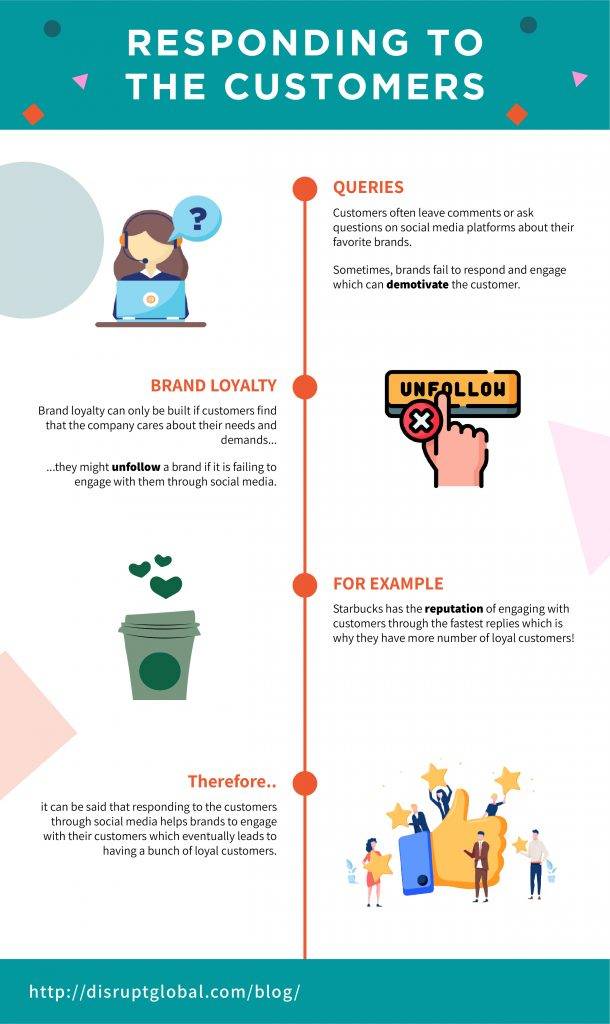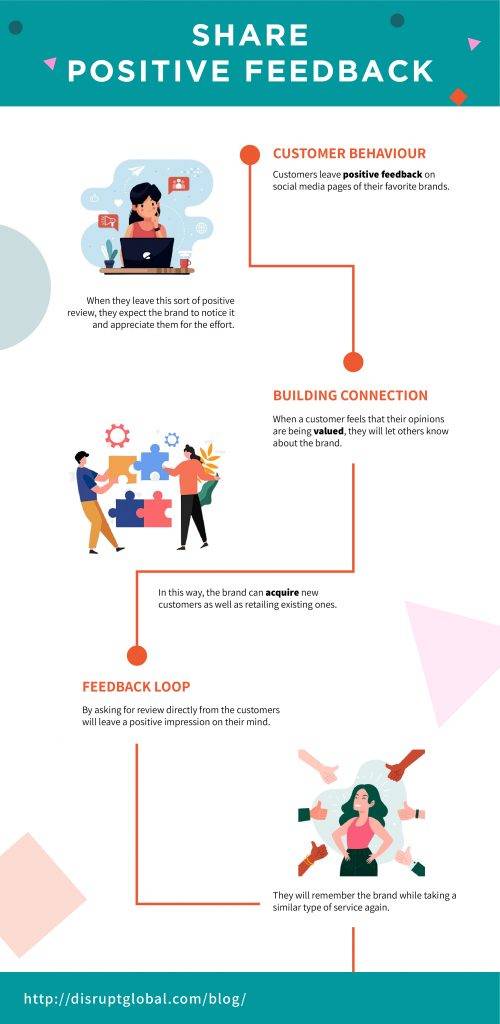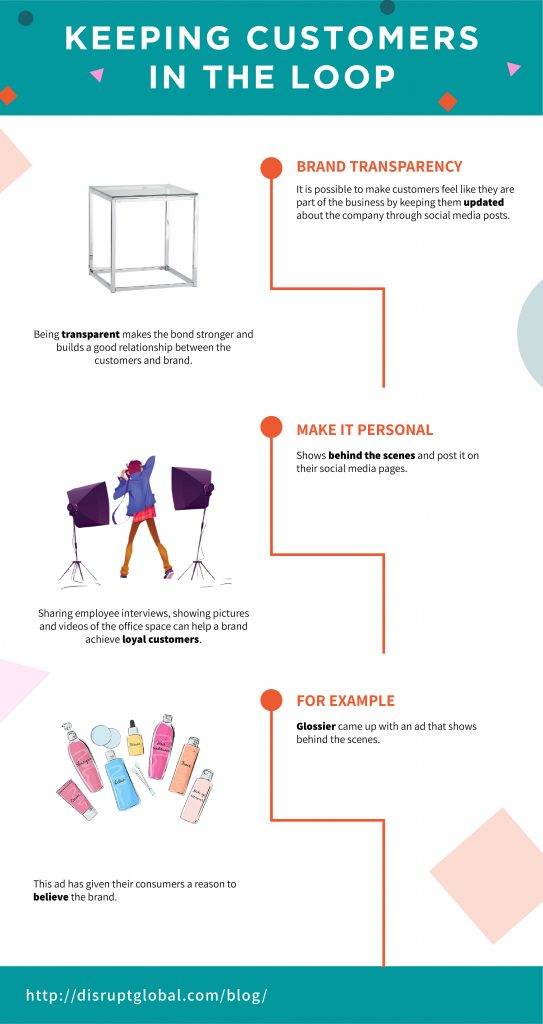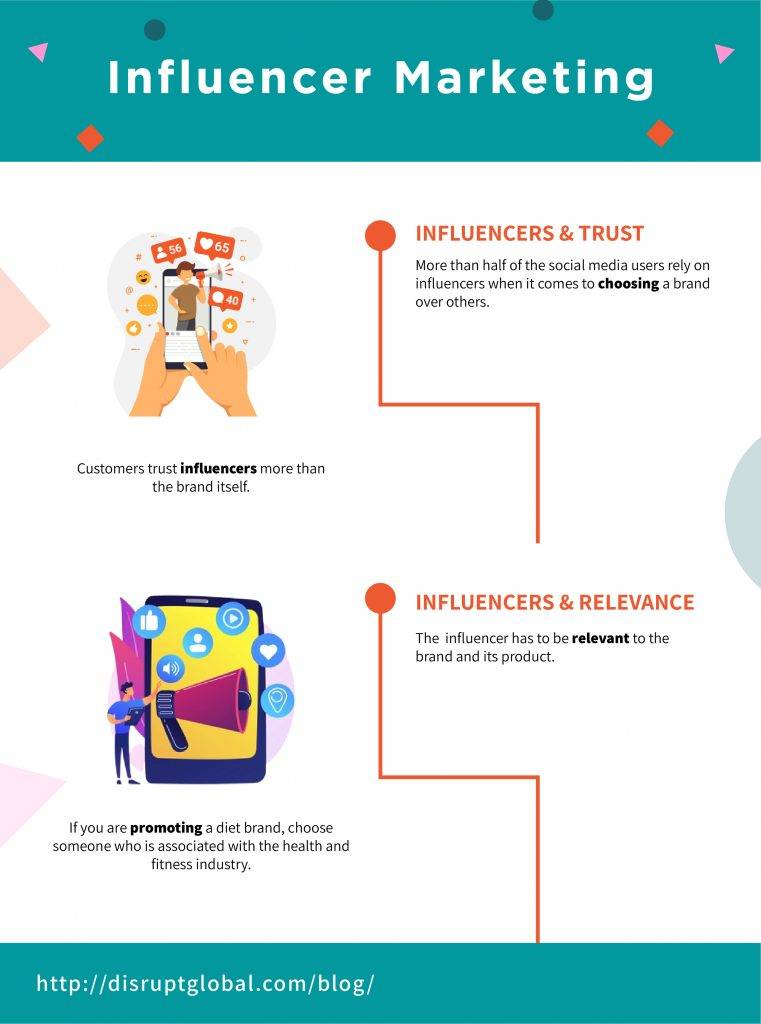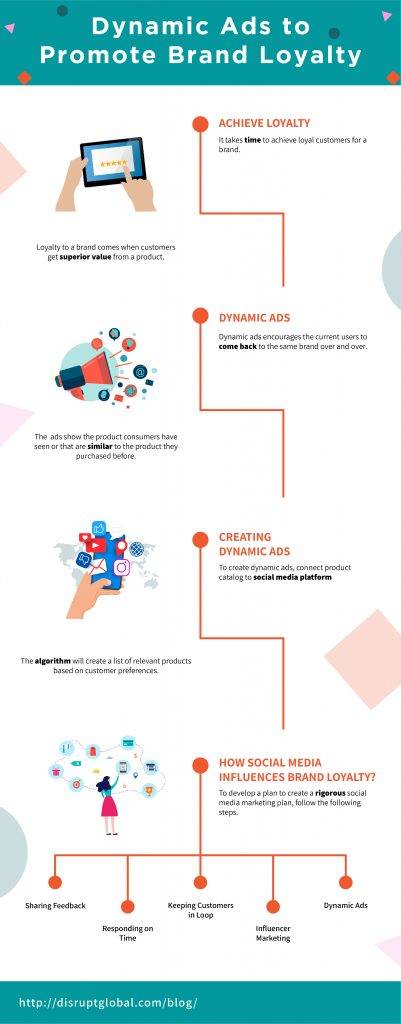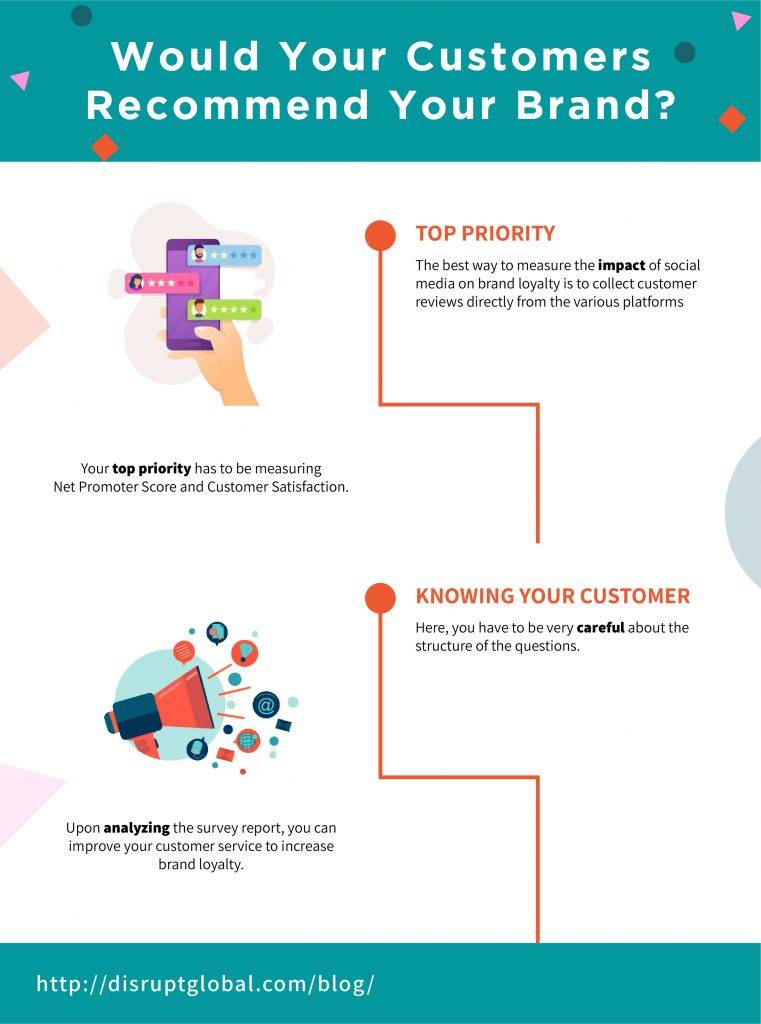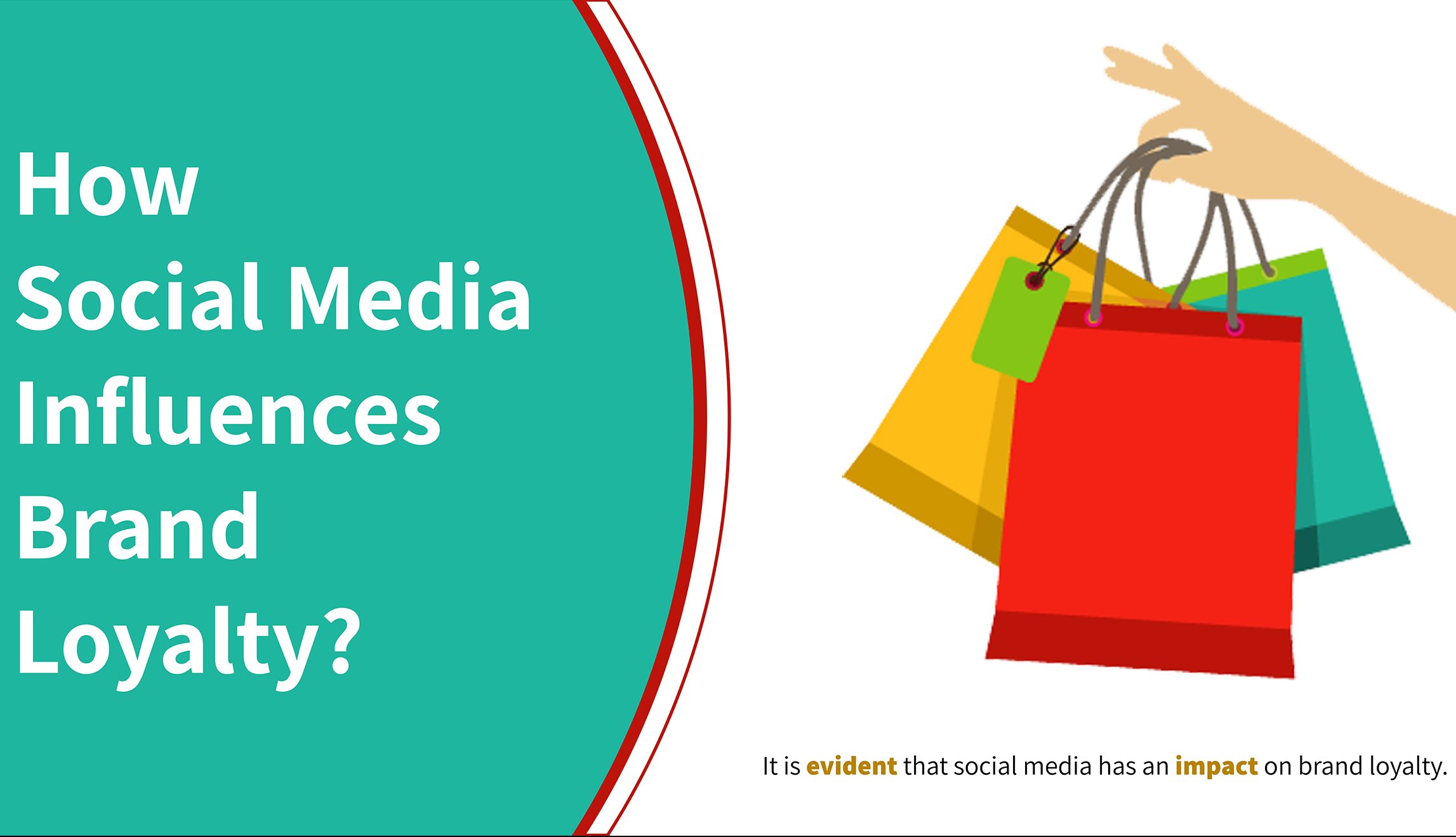
How Social Media Influences Brand Loyalty?
Posted by. Disrupt Tech. October 13, 2021
In today’s time when consumers are overwhelmed with options, brand loyalty has become the most important aspect for a brand to sustain in the competitive market. Brands that actively respond to consumers, engage with them and monitor closely can stand out in the crowd.
Maintaining a group of loyal consumers is more important than promoting new products. The following statistics show the truth behind this statement.
- There is a 65% possibility that you can sell a product to your existing customers than sell it to a new customer.
Having said that, the major goal of a company is to deliver superior service to their existing customers so that they can acquire new customers through word of mouth. More specifically, generating a bunch of superfans of the brand.
It is evident that social media has an impact on brand loyalty. Throughout the later part we will see how that happens.
Responding to the Customers
Customers often leave comments or ask questions on social media platforms about their favorite brands. It is common to see them chatting with the brand through social media before making a purchase. Sometimes, brands fail to respond and engage which can demotivate the customer.
Brand loyalty can only be built if customers find that the company cares about their needs and demands. According to a survey, 72% of respondents said they are more loyal to brands that respond faster. Moreover, 15% of respondents admitted that they might unfollow a brand if it is failing to engage with them through social media.
For example, Starbucks has the reputation of engaging with customers through the fastest replies.
Hence, it can be said that responding to the customers through social media helps brands to engage with their customers which eventually leads to having a bunch of loyal customers.
Share Positive Feedback
Customers leave positive feedback on social media pages of their favorite brands. It happens when they are delighted by the product or service. When they leave this sort of positive review, they expect the brand to notice it and appreciate them for the effort.
By sharing their thoughts, you can attract new customers and retain existing ones. When a customer feels that their opinions are being valued, they will let others know about the brand. In this way, the brand can acquire new customers as well. Social proof works here as a magnet that attracts new customers.
Moreover, brands can ask for reviews directly from the customers. It will leave a positive impression on their mind. They will remember the brand while taking a similar type of service again. Do not forget to share their review on the social media pages.
Keeping Customers in the Loop
It is possible to make customers feel like they are part of the business by keeping them updated about the company through social media posts. According to a survey, 63% of customers have admitted that they are loyal to brands that are transparent. It makes the bond stronger and builds a good relationship between the customers and brand.
Here brands can build content that shows behind the scenes and post it on their social media pages. Moreover, sharing employee interviews, showing pictures and videos of the office space can help a brand achieve loyal customers.
For example, Glossier came up with an ad that shows behind the scenes. This ad has given their consumers a reason to believe the brand.
Influencer Marketing
Social media users tend to get product information from influencers. More than half of the social media users rely on influencers when it comes to choosing a brand over others. Customers trust influencers more than the brand itself. Hence, if a brand sticks to one certain influencer to promote, his/her followers have a good chance of becoming loyal to the brand.
However, the influencer has to be relevant to the brand, or it might create a bad impression. For example, if you are promoting a diet brand, you have to choose someone who is associated with the health and fitness industry.
Having said that, you can use tools like Facebook’s Brand Collabs Manager to find the perfect influencer for your brand.
Dynamic Ads to Promote Brand Loyalty
Brand loyalty is not a matter of one day or even a year. It takes time to achieve loyal customers for a brand. When customers get superior value from a product, they become loyal to that brand.
Having said that, dynamic ads work wonders here. It encourages the current users to come back to the same brand and repurchase the product. These sorts of ads show the products consumers have seen before or that are similar to the product they purchased before.
To create dynamic ads on social media such as Facebook and Instagram, you can connect your product catalog to these platforms. Once you set the template, Facebook’s algorithm will create a list of relevant products and show it to the customers based on their preferences.
Now that we have seen how social media can influence brand loyalty, let’s took a look at the diagram below to have a better understanding. If you are planning to create a rigorous social media marketing plan, you can download the diagram and follow it thoroughly.
Would Your Customers Recommend Your Brand?
Now that we are at the end of this write-up, the major question arises that would the customers recommend your brand?
The best way to measure the impact of social media on brand loyalty is to collect customer reviews directly from the various platforms. Reviews can give you a clear picture of the state you are in. Your top priority has to be measuring Net Promoter Score and Customer Satisfaction.
However, you can survey your customers with a standard set of questions. Here, you have to be very careful about the structure of the questions. Upon analyzing the survey report, you can improve your customer service to increase brand loyalty.
Not to mention, leading companies around the world are doing this for a long time now. This is the time when you start using these strategies to increase brand loyalty.
